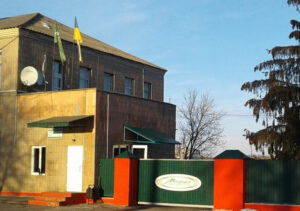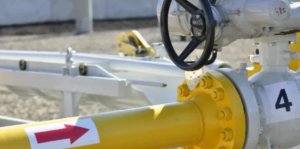
Based on the results of 2025, JSC Ukrzaliznytsia expects international passenger traffic to grow by 11% compared to 2024 – to 3 million passengers from 2.7 million, said Oleg Golovashchenko, director of the Passenger Company branch Oleg Golovashchenko, director of the Passenger Company branch of JSC Ukrzaliznytsia, at the VII International Conference “Production, Operation, and Repair of Rolling Stock” on Thursday.
According to his data, 1.8 million passengers were transported in January-September 2025. In pre-war 2021, the figure for international passenger traffic was 147,000, and in 2023, it was 2.3 million passengers.
As previously reported, Ukrzaliznytsia launched a daily train on the Kyiv-Bucharest route on October 10. In September 2025, the first section of the European gauge railway between Chop and Uzhhorod was opened in Zakarpattia.
At that time, the chairman of the board of JSC Ukrzaliznytsia, Oleksandr Pertsovskyi, noted that this project is an important stage in the development of the European railway network in Ukraine. According to him, in 2026, it is planned to electrify this section and start the construction of a European gauge railway in the direction of Lviv, which should be completed within two to three years.
In addition, during the Kyiv International Economic Forum (KIEF) in mid-October, Oleg Yakovenko, director of the strategy and transformation department of Ukrzaliznytsia, announced that the company, with European and state co-financing, plans to implement the Mostytska-Sknyliv project in the next two years and further develop the Lviv-Uzhhorod-Chop and Lviv-Chernivtsi-Vadul-Siret (Romania) corridors, which will allow Ukraine to begin restoring and realizing its unique geographical status.
Overall, the monopoly railway operator JSC Ukrzaliznytsia increased passenger traffic by 1.2% in the first half of 2025, to 13.52 million, which is 23% more than in January-June 2024.

In January-June 2025, pharmaceutical manufacturer PJSC Monfarm (Cherkasy region) increased its net profit eightfold compared to the same period in 2024, to UAH 7.3 million.
According to the company’s disclosure to the National Securities and Stock Market Commission (NSSMC), net sales revenue for this period increased by 24.5% to UAH 133.89 million.
Monfarm PJSC was established in 1994 through the corporatization and privatization of the Monastyryshchensky Pharmaceutical Plant, a state-owned enterprise organized in 1986 on the basis of a distillery that was part of the Darnitsa Pharmaceutical Association in Kyiv.
Monfarm specializes in the production of suppositories and tableted drugs, with more than 70 names of drugs from various pharmaceutical groups.
The quality of products is confirmed by GMP certificates.

The volatile global cryptocurrency market saw key changes between October 20 and 25, 2025, indicating a shift in participant sentiment and increased regulatory risks.
Bitcoin (BTC) surpassed the ~$111,000 mark, signaling a recovery after a recent decline.
Ethereum (ETH) broke through the ~$4,000 level, which was also perceived as positive by the market.
However, the growth was accompanied by caution: the Crypto Fear & Greed Index stood at 30 (“fear”).
Funds withdrawn from Bitcoin-tracking funds amounted to approximately $1.23 billion in a week — one of the largest outflows since their launch.
Amid weak liquidity and regulatory uncertainty, the overall cryptocurrency market came under pressure again, despite attempts at recovery.
Expectations are growing around a possible change in US Federal Reserve policy — investors are counting on easing, which is creating short bursts of demand.
New initiatives to regulate the crypto market have emerged from international bodies: the Financial Stability Board (FSB) has warned of “significant gaps” in the global legal framework.
Technical factor: increased volatility and large outflows from ETF funds are exacerbating cycles of correction and recovery.
Cryptocurrency is a digital asset based on blockchain technology that is used as a means of saving, payment, or speculation. The crypto asset market is characterized by high volatility, insufficient regulation, and significant influence from external factors: central bank decisions, new regulations, and technological breakthroughs.

U.S. President Donald Trump said on Saturday he does not plan to meet with Russian President Vladimir Putin until he thinks a deal is in place to secure peace between Russia and Ukraine.
“You have to know that we’re going to make a deal, I’m not going to be wasting my time,” Trump told reporters in Doha.

The 54th Molodist Kyiv International Film Festival has kicked off in the Ukrainian capital. A total of 158 films from 59 countries are being screened in the festival’s international, national, and alternative competitions, as well as in its non-competitive program.
The traditional Festival of Festivals program at the Molodist International Film Festival brings together the most outstanding films of the year—winners from Cannes, Locarno, Venice, Berlinale, SUNNY BUNNY, and Sundance. The repertoire of the “Festival of Festivals” includes, in particular, the winner of the Sundance Film Festival’s international feature film competition, “The Fruit of the Prickly Pear” (director Rohan Parashuram Kanavade, India), as well as works by Sho Miyake (Japan) “Journey and Everyday Life” (grand prize at Locarno) and Vytautas Katkus (Lithuania) “The Guest” (prize for directing at Karlovy Vary).
Fans of the classics of the “Romanian New Wave” Radu Jude will be able to see two of his new films at once – “Continental ’25” (Silver Bear for Best Screenplay at the Berlinale) and “Dracula” (world premiere at the Locarno Film Festival in August this year).
In addition, Molodist will host the world premiere of If We Never Meet Again by directors Noaz Deshe, Bo Willimon, and Peter Verzilov, who is fighting against Russian aggressors on the side of Ukraine as part of the Russian Volunteer Corps.
A selection of contemporary Ukrainian films will be presented in the competitive and non-competitive sections. The international competition (feature films) will feature the world premieres of two Ukrainian films: Our House on Fire by Olesia Biletska and The Tired by Yuriy Dunay. The national competition includes 17 short films. The non-competitive section “Special Events” will feature a screening of the film ‘Yasa’ by cult Ukrainian director Serhiy Masloboychikov. The program also includes a new film by Ukrainian animation director Mykyta Lyskov, “Kyiv Cake.”
The festival, which will run until November 2, will be held at the Zhovten cinema and the House of Cinema.
The history of the festival began in 1970 with a two-day screening of short films made by students of the cinematography department of the Kyiv State Institute. Soon, the festival transformed into a large review of films from all over the country, as well as from Georgia and Armenia. Since 1975, not only student works but also feature-length films have been admitted to the competition. In the 1990s, the festival became international. The Molodist Festival has the status of an international specialized event dedicated to debut films, according to the registration of the International Federation of Film Producers Associations (FIAPF). The general director of the festival is Andriy Khalpakchi.
Source: https://www.molodist.com/ua

On October 24, the National Energy Regulatory Agency of Moldova (ANRE) held an open meeting of the Board of Directors, during which it approved a 50% reduction in tariffs for gas transportation to Ukraine.
“During the meeting, the Board approved amendments to Decision No. 272/2025 on the optimization of the ”Route 1″ capacity product on the Trans-Balkan pipeline, following a joint initiative submitted by natural gas transmission system operators from Greece, Bulgaria, Romania, the Republic of Moldova, and Ukraine. The initiative aims to strengthen regional energy security and ensure natural gas supplies to Ukraine,“ according to a statement on the ANRE official website.
”The approved changes provide for the extension of the application of the “Route 1” product for 6 months (November 2025 – April 2026), the application of a 50% reduction in transportation tariffs for SRL “Vestmoldtransgaz” at the Kaushen and Grebeniki interconnection points, as well as the extension of the application of the capacity product to all relevant interconnection points along the route. The application of a 50% reduction in transportation tariffs is also provided for by the Romanian transmission system operator SA “Transgaz,” ANRE explained.
“With this decision, the Republic of Moldova is strengthening its role as a regional transit corridor, facilitating the transport of natural gas from Greece to Ukraine and contributing to the diversification of routes and sources of supply. In the long term, transportation volumes are expected to increase and, as a result, the associated tariffs will decrease for users of the transport system operated by SRL Vestmoldtransgaz,” the statement emphasized.